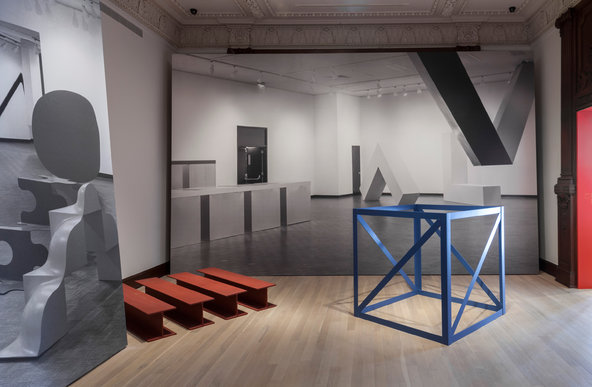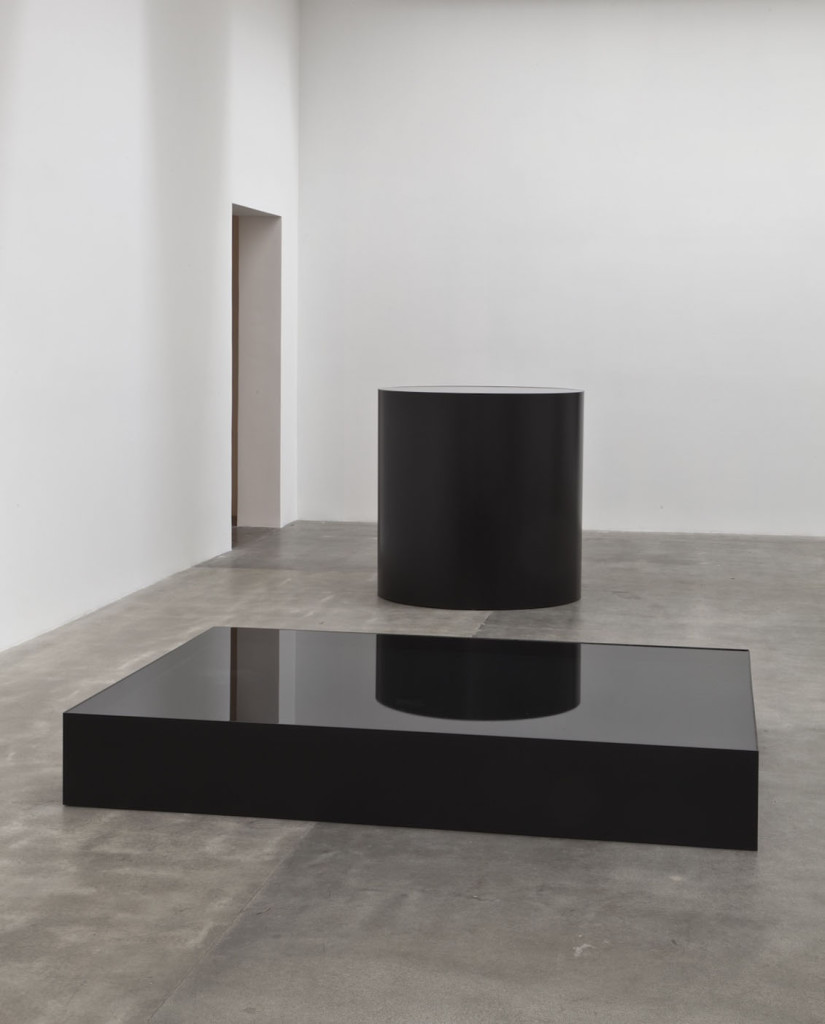Other Primary Structures
Jewish Museum, New York, NY, March 14, 2014 — August 3, 2014

Installation view, Other Primary Structures, Jewish Museum, New York
David Heald/The Jewish Museum

Phase of Nothingness—Water, included in "Other Primary Structures."
Installation view, Requiem for the Sun: The Art of Mono-ha, Blum and Poe, Los Angeles, February 25 - April 14, 2012
Joshua White/Blum and Poe
From exhibition website:
The sculptors represented in this exhibition are not consciously allied in a school or in a specific movement, but they do share a stylistic tendency by reason of their interest in “primary” artistic structure. The sculpture is often architectonic, if not architectural. Most of the work does not use base or pedestal, some are oriented to the walls, and some even to the ceiling. The artist feels free to utilize and activate the space of a room or the outdoors according to the internal necessities of the work.
The generally large scale of the work and its architectural proportions allow the sculpture to dominate the environment. At times the sculpture intrudes aggressively on the spectator’s space, or the spectator is drawn into sculptural space. Often the structure acts ambiguously, creating a spatial dislocation for the spectator with complex meanings.
These structures are also conceived as “objects,” abstract, directly experienced, highly simplified and self-contained. There is no overt surrealistic content and the anthropomorphic is rejected. Shape, color and material have a physical concreteness and unity. Generally, bright and vibrant color is in evidence, and when color is not applied, the intrinsic color of the sculptural material asserts itself. The new sculpture rejects patina and embellishment; color acts like a skin on a surface which is always smooth and never worked by hand or textured.
The sculpture has benefited from modern technology and industry. The artist can now conceive his work, and entrust its execution to a manufacturer whose precision and skill conveys the standardized “impersonality” that he may seek. Plastics, fibreglass, aluminum, fluorescent light have allowed the sculptor to formulate ideas and create dramatic visual effects that at any other time would have been impossible; as one artist has put it: “We are about to redesign the world.”
All of the sculptors in this exhibition share an uncompromising seriousness and open spirit of inquiry. The gesture behind their art is perhaps one of its most important aspects. They are anxious to find out what sculpture is and to discover how to make it. The new sculptors are transforming contemporary esthetics, many in response to the new world shaped by Space, Science, and Technology. Their work demands our attention and active participation.
Kynaston McShine
Curator of Painting and Sculpture, Jewish Museum, New York